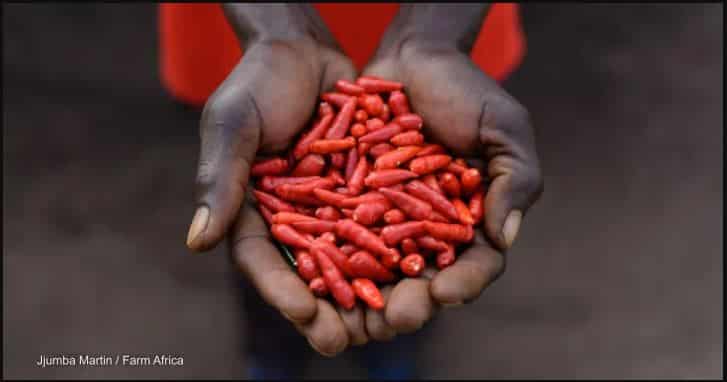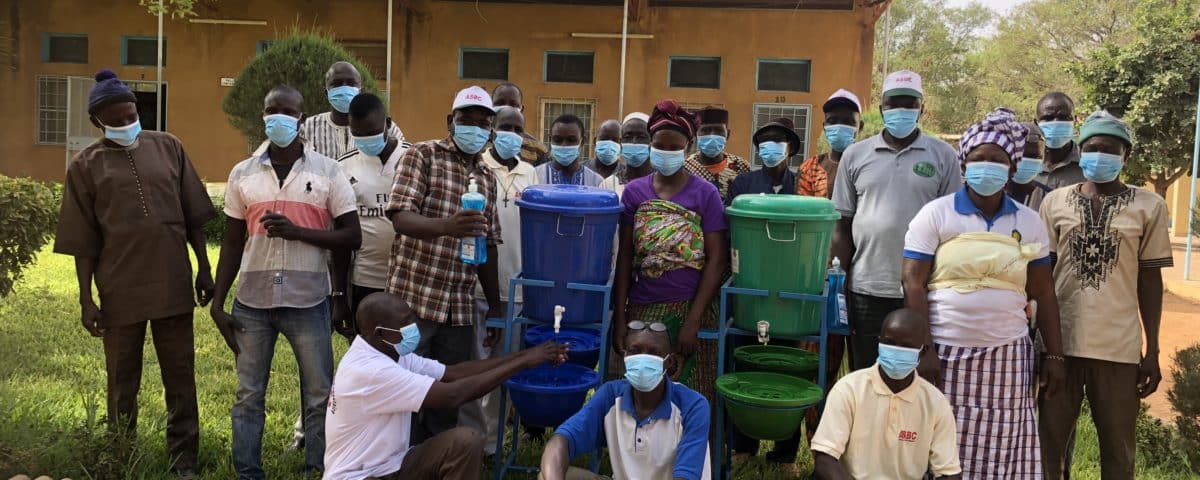
Agriculture in the time of COVID-19
July 27, 2021Summer 2021 Neighbors Magazine
August 31, 2021Getting Back on Track with Global Poverty Reduction

No country has escaped the setbacks caused by COVID-19, but impacts on low-income countries are proving far worse. The World Bank estimates the pandemic and the actions necessary to contain it will drive 150 million people globally into extreme poverty. Post-pandemic, there will likely be long-term effects. Even with this grim reality, there is hope. Governments and international development organizations have accumulated a wealth of knowledge about what works to reduce poverty and increase economic activity. As the Biden administration and other actors work to build a post-pandemic environment, key lessons can be drawn from this knowledge to inform recovery efforts.
Applying these lessons will be important for poor women who were struggling even before the pandemic. Women who live in rural areas of low-income countries are particularly marginalized and often lack access to education and livelihoods. International development organizations had made in-roads in this area before the pandemic struck. For instance, girls in low-income, isolated, or traditional societies were starting to make progress in gaining access to education. Decades-long gains achieved through the globalization of ideas, investment, and trade could evaporate due to the setbacks caused by the pandemic. Regaining educational and developmental advances could take many years, due in large part to the devastation wrought by the pandemic and the impacts of severe climate change on poor communities.
American Leadership Matters
The United States has led and sustained the global economic development agenda for the past 70 years. There have been notable successes, such as the President’s Emergency Plan for AIDS Relief, which started in 2003. This ongoing, multi-billion-dollar global effort to treat and prevent HIV/AIDS is widely considered to be among the more successful public health efforts in history. The relief plan saved more than 20 million lives and prevented millions of HIV infections in more than 50 countries. It has also enabled millions of people to continue to work, helping promote economic growth, food security, and poverty reduction. Since much of the $85 billion was focused on building health care capacity and infrastructure, the far-sighted program has helped strengthen health care and sustainability around the world.
The United States can once again mobilize public and private sectors to enable poor communities to help themselves during and after the pandemic. After COVID-19 is better controlled, climate change will still play a harmful role around the world. Low-income countries, many of which are largely agricultural, are particularly vulnerable. Droughts, floods, and other extreme weather events can destroy economic capacity and drive increased migration—often to other countries also affected by climate change. Even while the focus on vaccine distribution and access will remain the priority until we are living in a post-COVID world, the global community must continue working to address climate change.
Public and private development organizations must integrate climate change resilience in all decisions and programs, from lending for food security to health care programs. International assistance needs to become more preemptive in helping communities prepare for natural disasters. It should also create local disaster management teams in vulnerable communities and implement agricultural techniques which both protect the environment and are resilient to the extremities of climate change. Many disaster risk reduction strategies and agricultural techniques are already in use, such as how remote villages in Indonesia’s climate change strategy improved the islanders’ resilience in the face of the pandemic. Local strategies like these need to be scaled up and disseminated in hard-to-reach communities.
More and Better Globalization
At its base, globalization is the worldwide integration of economic activity. Its downsides have been well documented by both its opponents and supporters. Nevertheless, the sharing of ideas, goods, services, and capital has resulted in the largest poverty reduction in history. It has also contributed to more women joining the workforce. Advances in maternal and reproductive health have also played a large role in advancing women’s rights. Improvements in health, education, and more women entering the workforce are all advances we need to maintain and continue to promote. The world needs more integration of these positive factors of globalization, but done in ways that benefit both industrialized regions and more rural, marginalized communities. For example, it would benefit everyone to ensure education for all young people, with an emphasis on including girls and young women.
Invest on the Community Level
Low-income countries seeking to lift themselves out of poverty need more investment—especially in sustainable agriculture and clean energy. These investments can both reduce poverty and mitigate out-migration by reducing “push factors,” such as lack of jobs and food scarcity which force people to leave their homes and seek basic subsistence in other countries. While larger globalization efforts are fueling societal shifts, we need to continue to invest at the grassroots level.
In every community where my organization, World Neighbors, works, we help people develop savings and credit programs. Villagers contribute small amounts each month and take out small loans at low or no interest, often to invest in greenhouses, increase agricultural output, start small businesses, pay children’s school fees, or other livelihood improvements. Profits are reinvested in the savings and credit groups, enabling others to take loans. In Kenya, savings and credit groups have accumulated enough capital to register as cooperative banks. Increased access to capital is even more important as low-income countries recover from the pandemic.
Humility and Patience
One key to sustainability is understanding the resources and strengths which already exist in each community. By building on what is already working and helping to develop capacities on the ground, communities can help themselves and they start to value existing strengths. Not only does this avoid the problem of dependency on outsiders, it creates pride and ownership. Training needs to focus on technical skills and on leadership with a focus on women and youth.
This kind of support work requires long-term horizons and consistent effort. World Neighbors works with communities for a minimum of eight to ten years. This long-term strategy is the only way to ensure that investments in communities will be sustained and they will develop the capacity to continue improving on their own. Real change—that is built on improved knowledge and skills, capital accumulation, and integration with government policies—is difficult to accomplish in the short-term. Long-term improvements in income, well-being, and other factors can add up to a better standard of living. These processes take time.
Keep Focusing on Women and Girls
Women play a crucial role in development. Take the example of Laxmi B.K., who lives in the rural village of Sindhupalchok, Nepal. Laxmi is a member of the Dalit community.
A few years ago, Laxmi was invited to a World Neighbors training. She joined a savings and credit group and took every class being offered—water management, worm composting, basic bookkeeping, women’s health, and more. After the training sessions, Laxmi planted a kitchen garden—from which she now earns hundreds of dollars per month in vegetable sales. Her profits are a substantial sum in her village.
Over the years, Laxmi has borrowed from her savings and credit group to purchase additional land for vegetable cultivation and sales. She registered her community development group with the municipal and tax offices, and is now able to apply for publicly available healthcare and other funds. Laxmi’s success has changed her relationship with her spouse, other men in her village, and members of other castes. They now support her leadership efforts that bring public resources to her village.
There are millions of people in low-income countries with similar challenges and potential. They need the kind of opportunities and support which leads to success.
The world has been through some tough times. The current pandemic and economic stress may be the toughest in a century. These challenges require us to work much harder and smarter to continue the tremendous improvements in living standards and poverty reduction achieved over the past 70 years.
While wealthier nations and international development organizations can play a part, as they have for decades, communities and nations are ultimately responsible for their own improvement. The challenge is to find the right balance to create a more open, prosperous, and equitable world without poverty.
Kate Schecter, Ph.D., is the President and CEO of World Neighbors, which works with communities in 13 countries in Africa, Asia, Latin America and the Caribbean on lasting solutions to poverty, disease and climate change.
Sources: Economic Policy Institute, Global Change Data Lab, Global Citizen, Journal of Acquired Immune Deficiency Syndromes, Kaiser Family Foundation, New York Times, U.S. Department of State, World Bank Group, and World Neighbors

